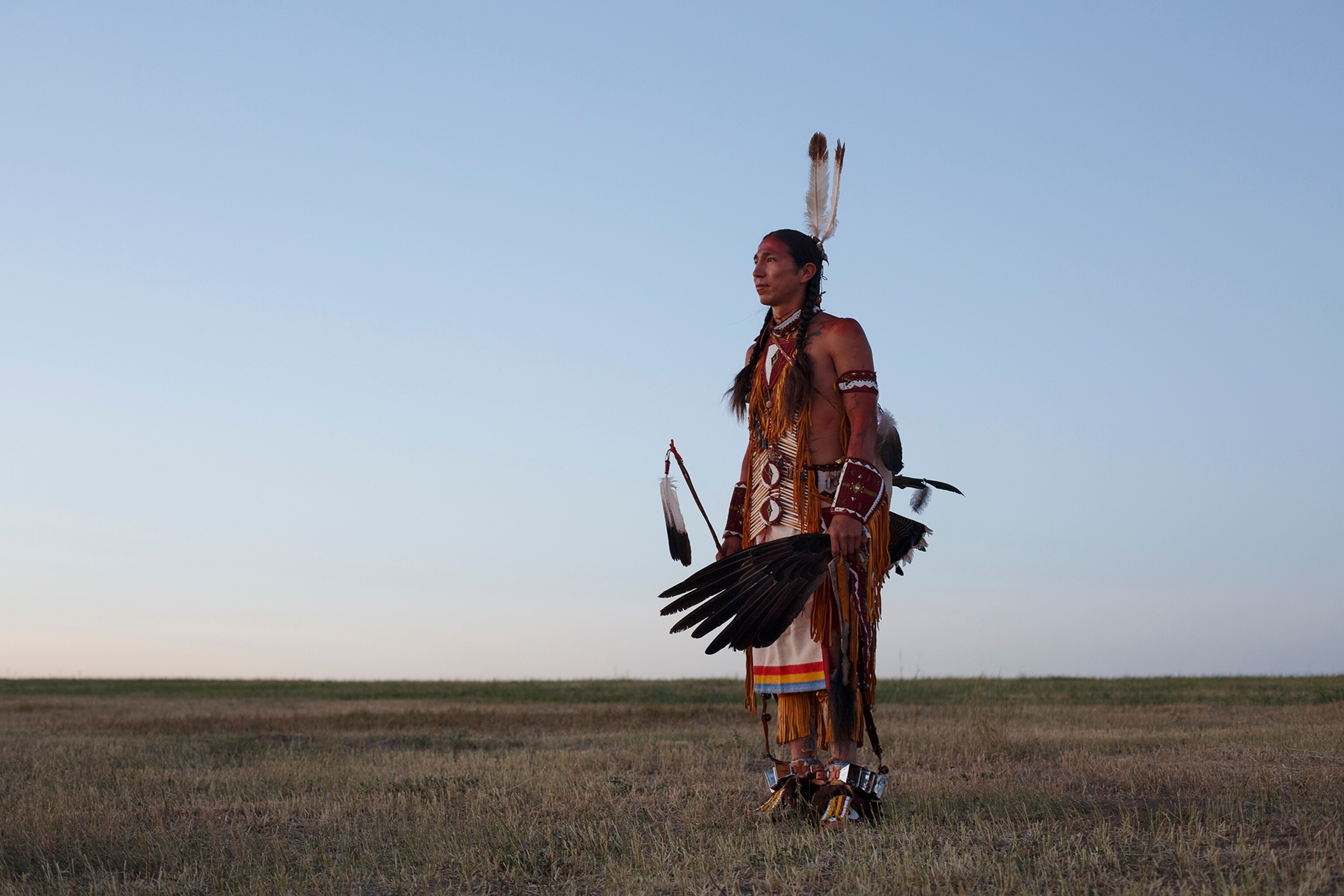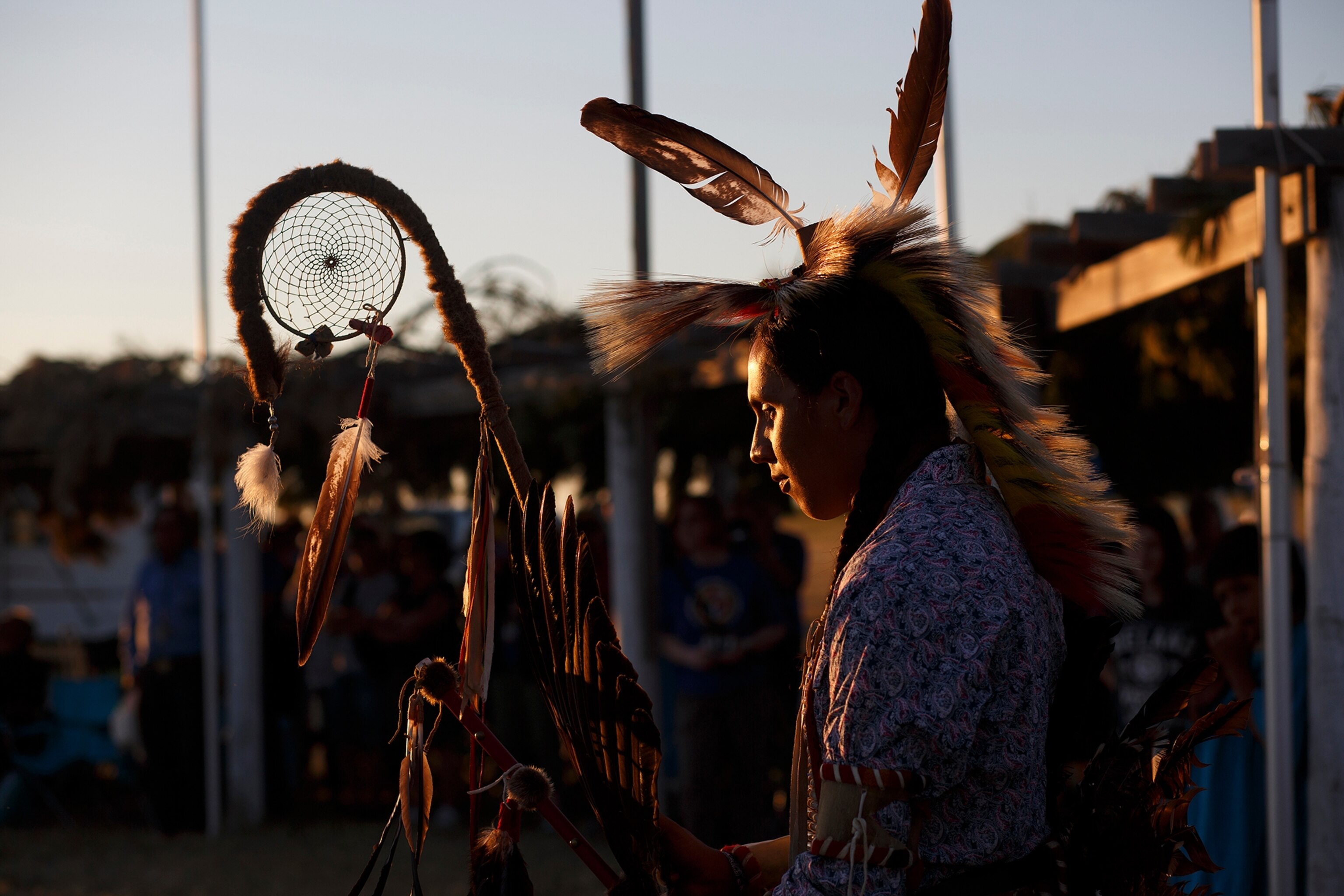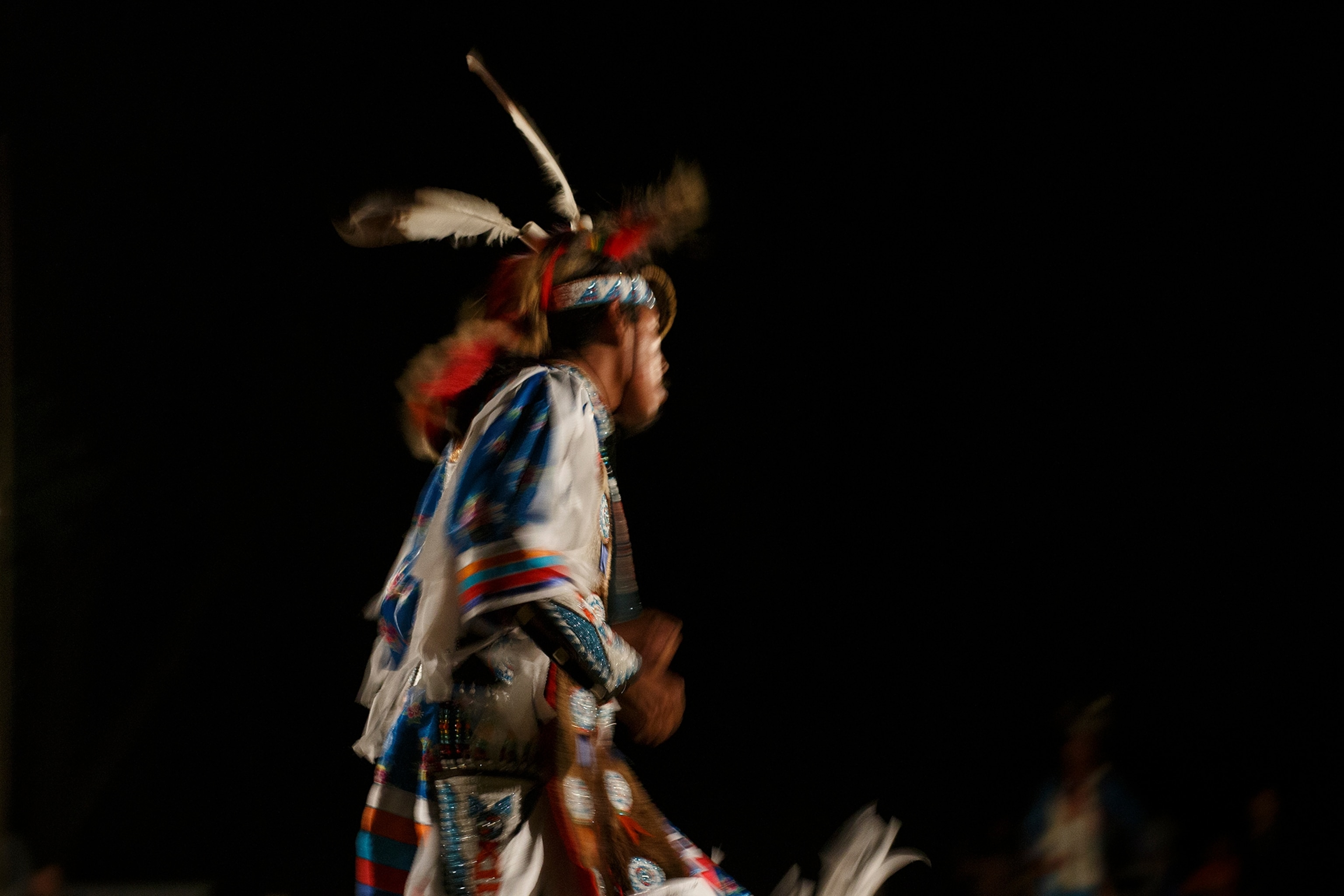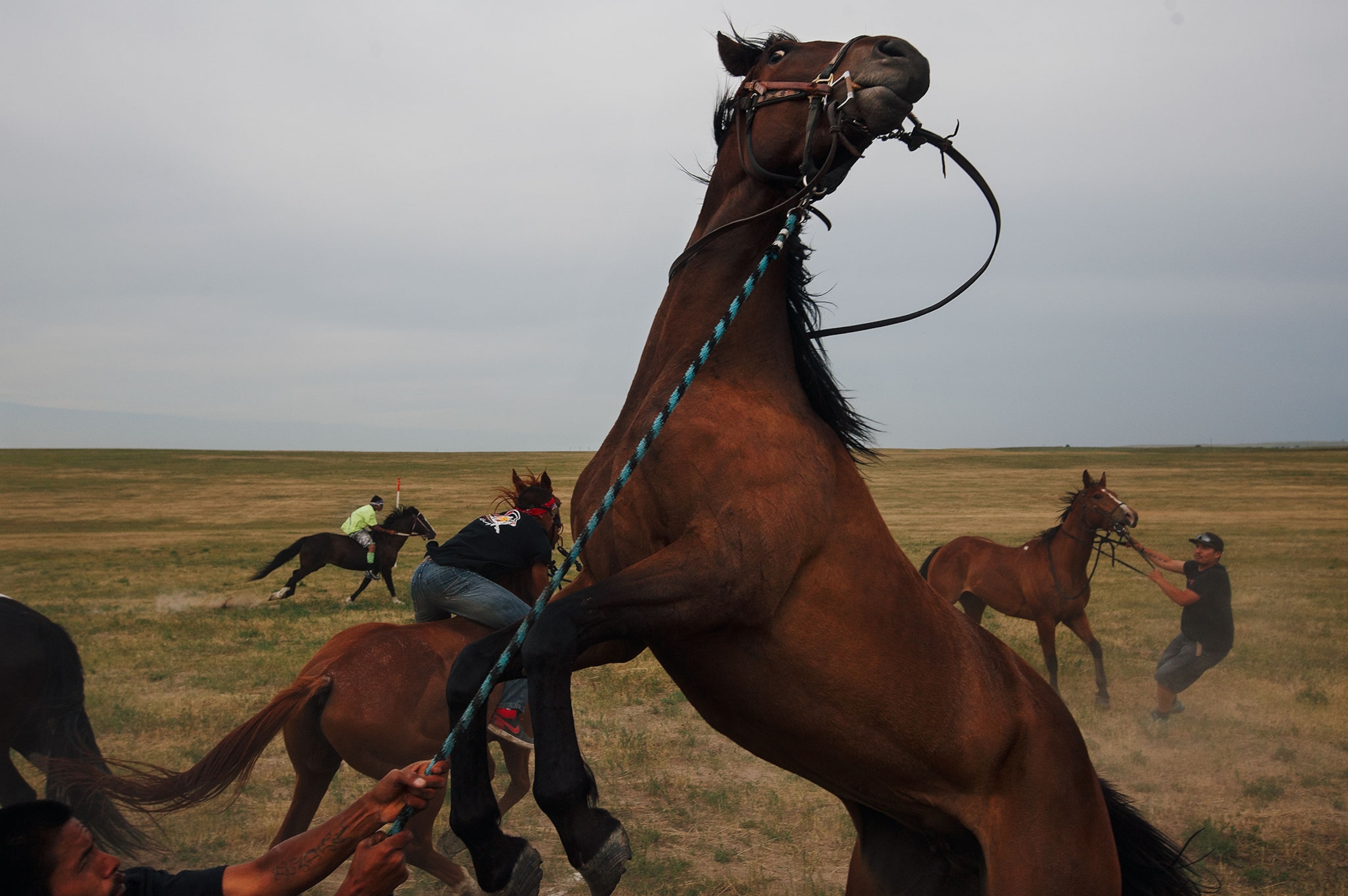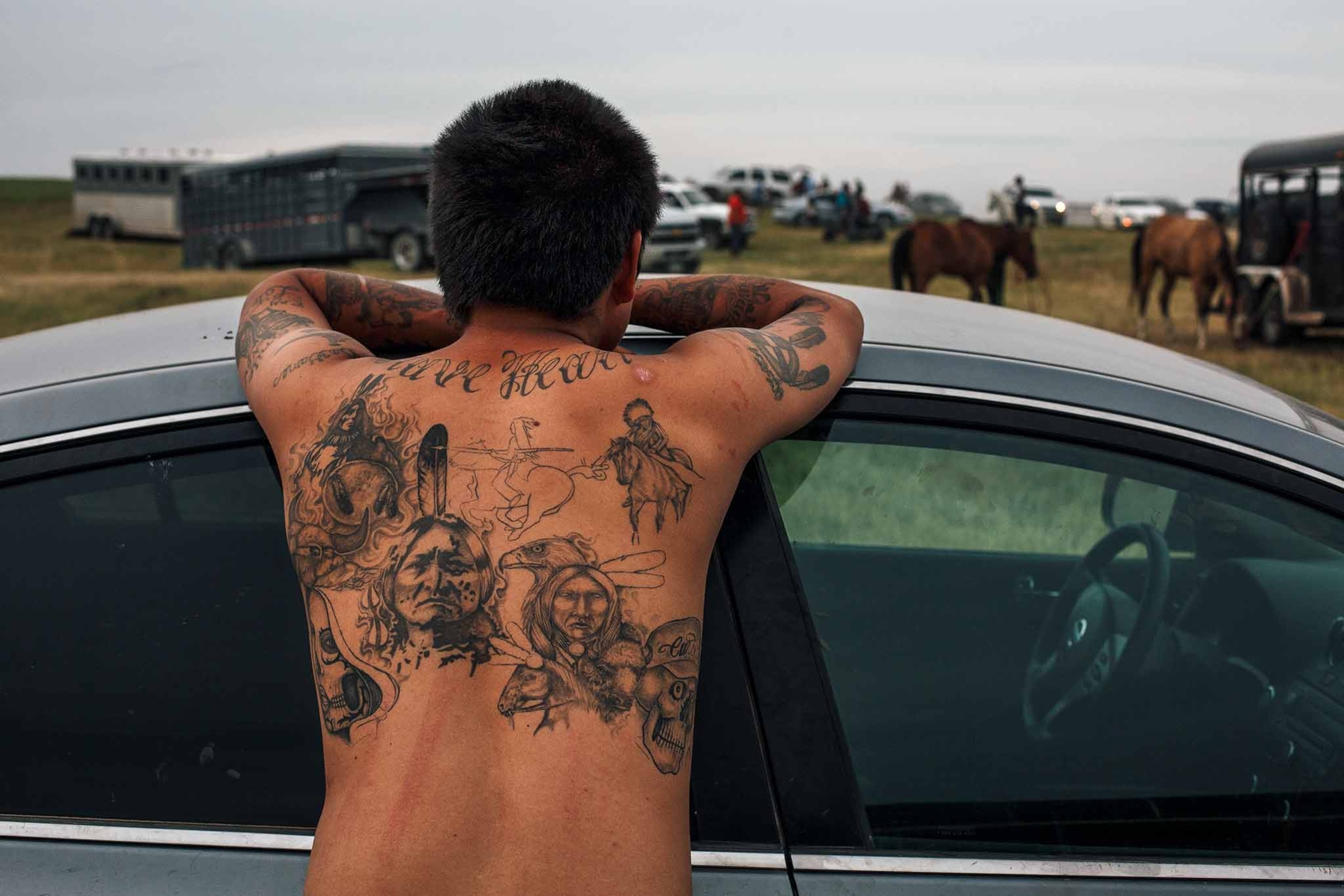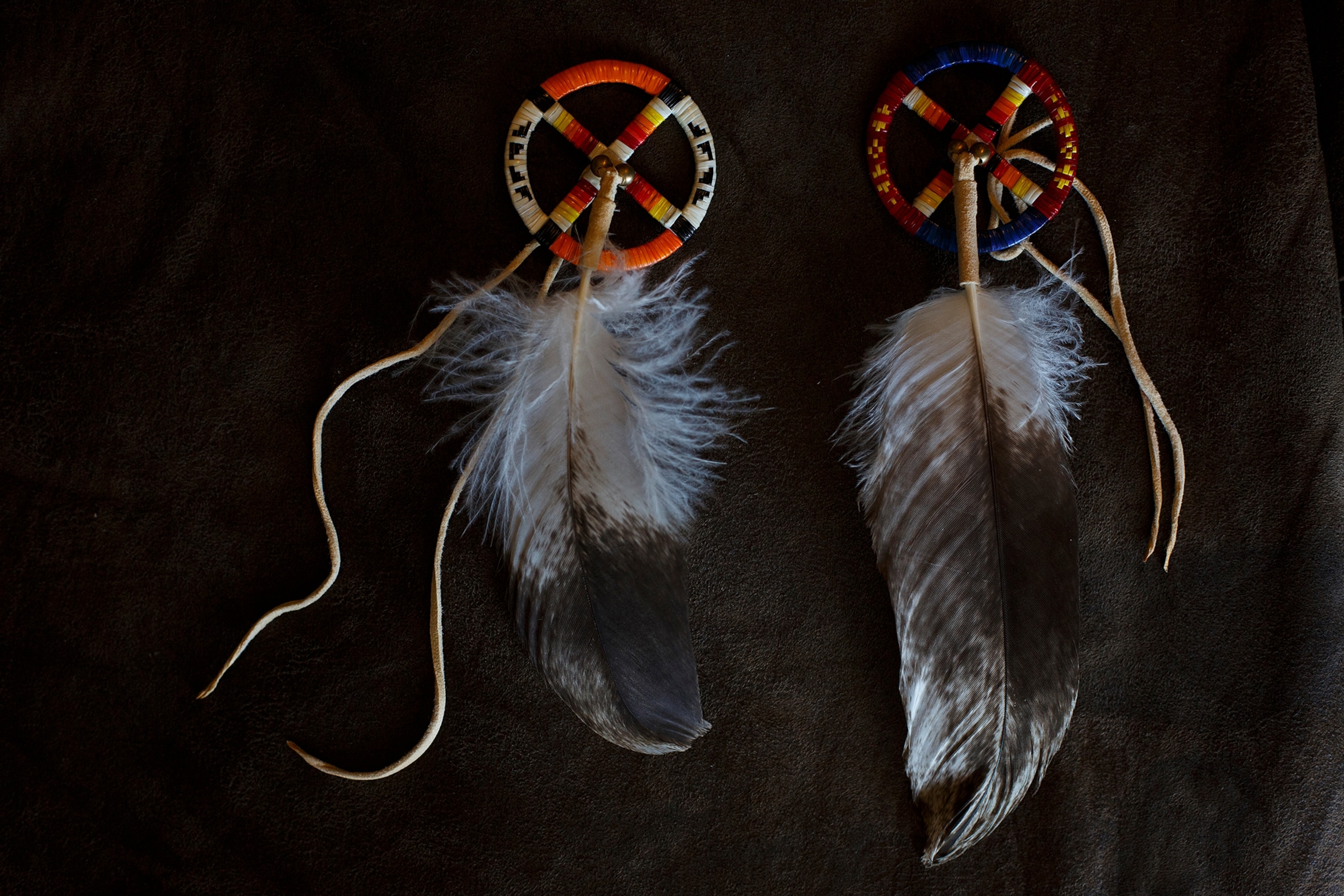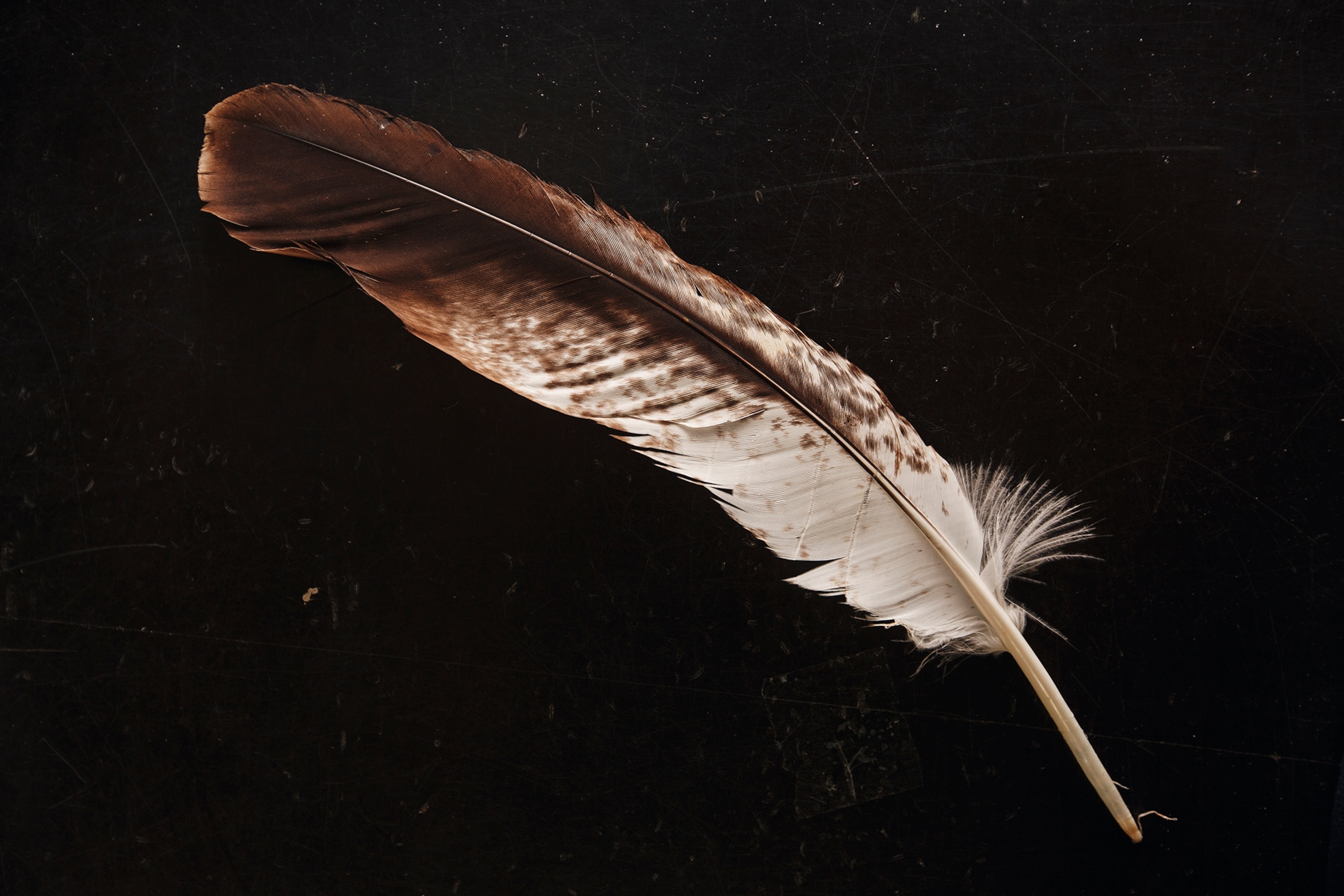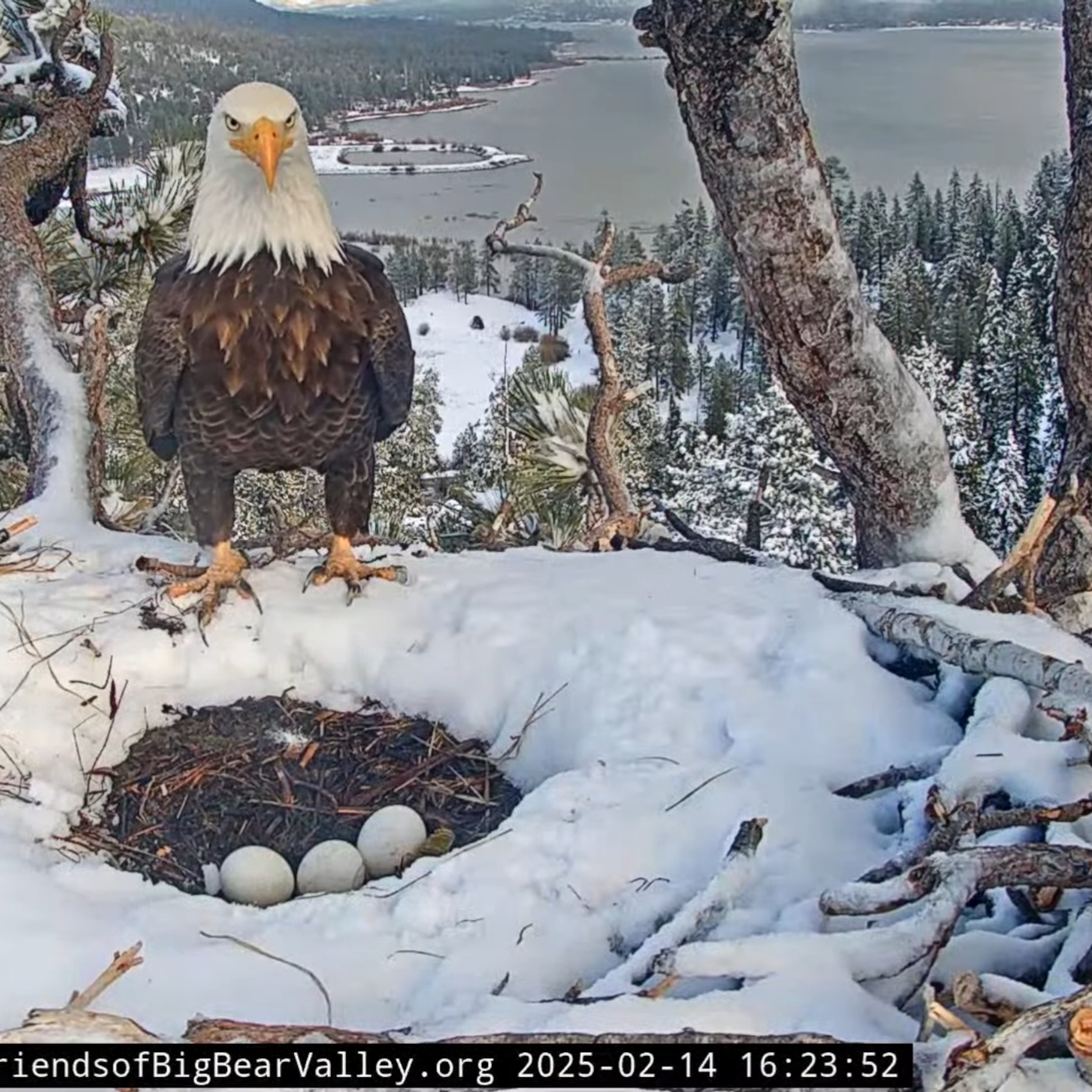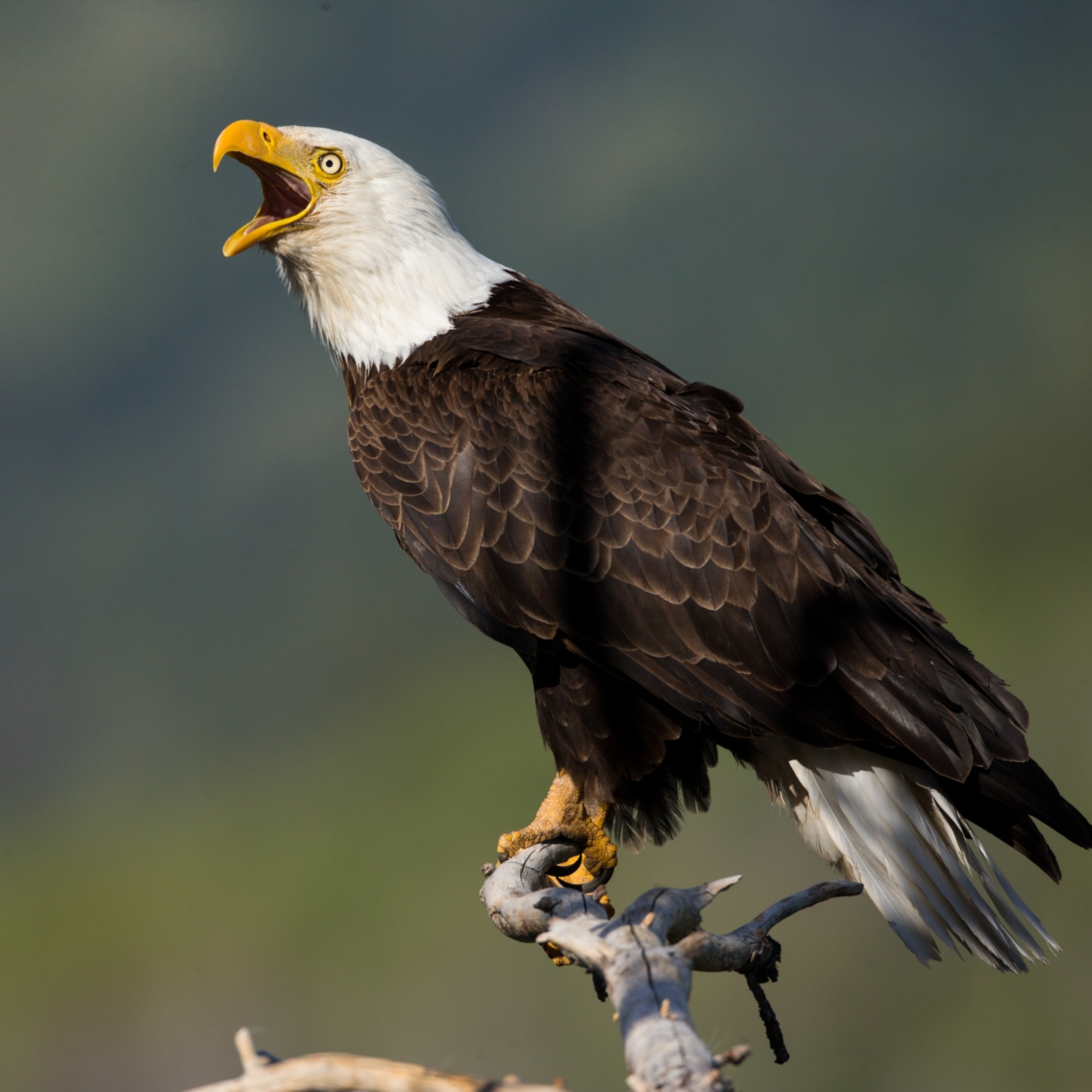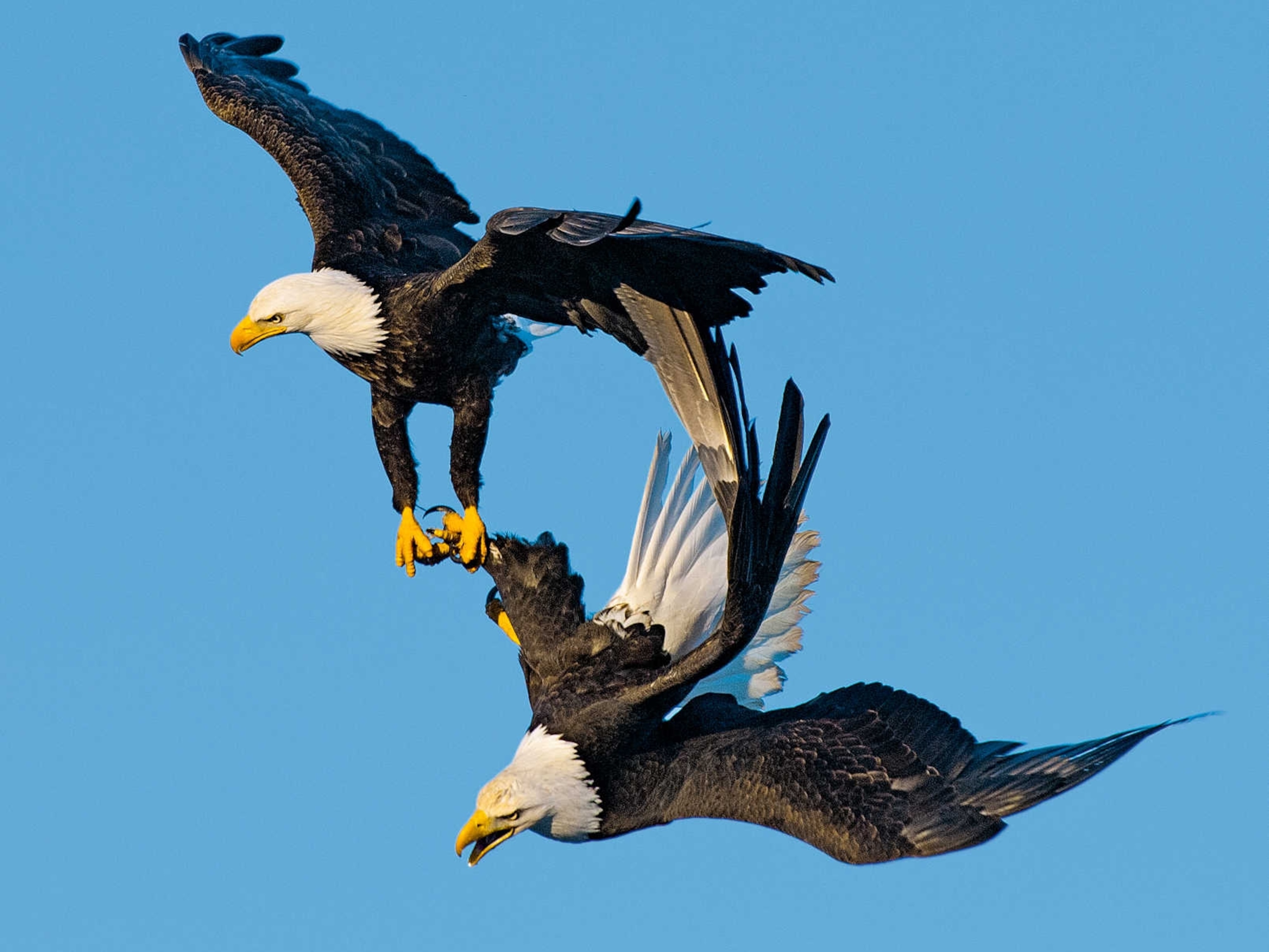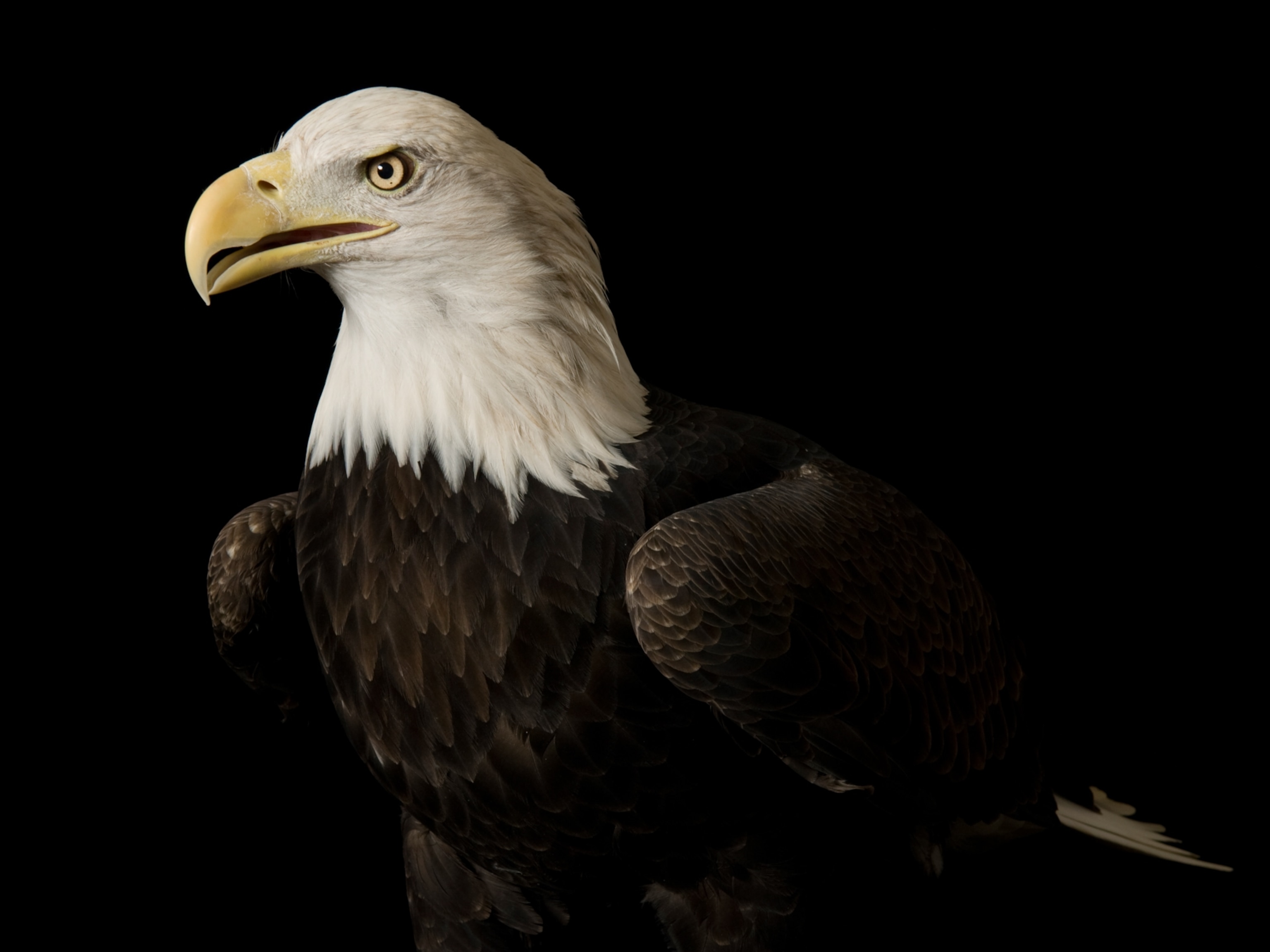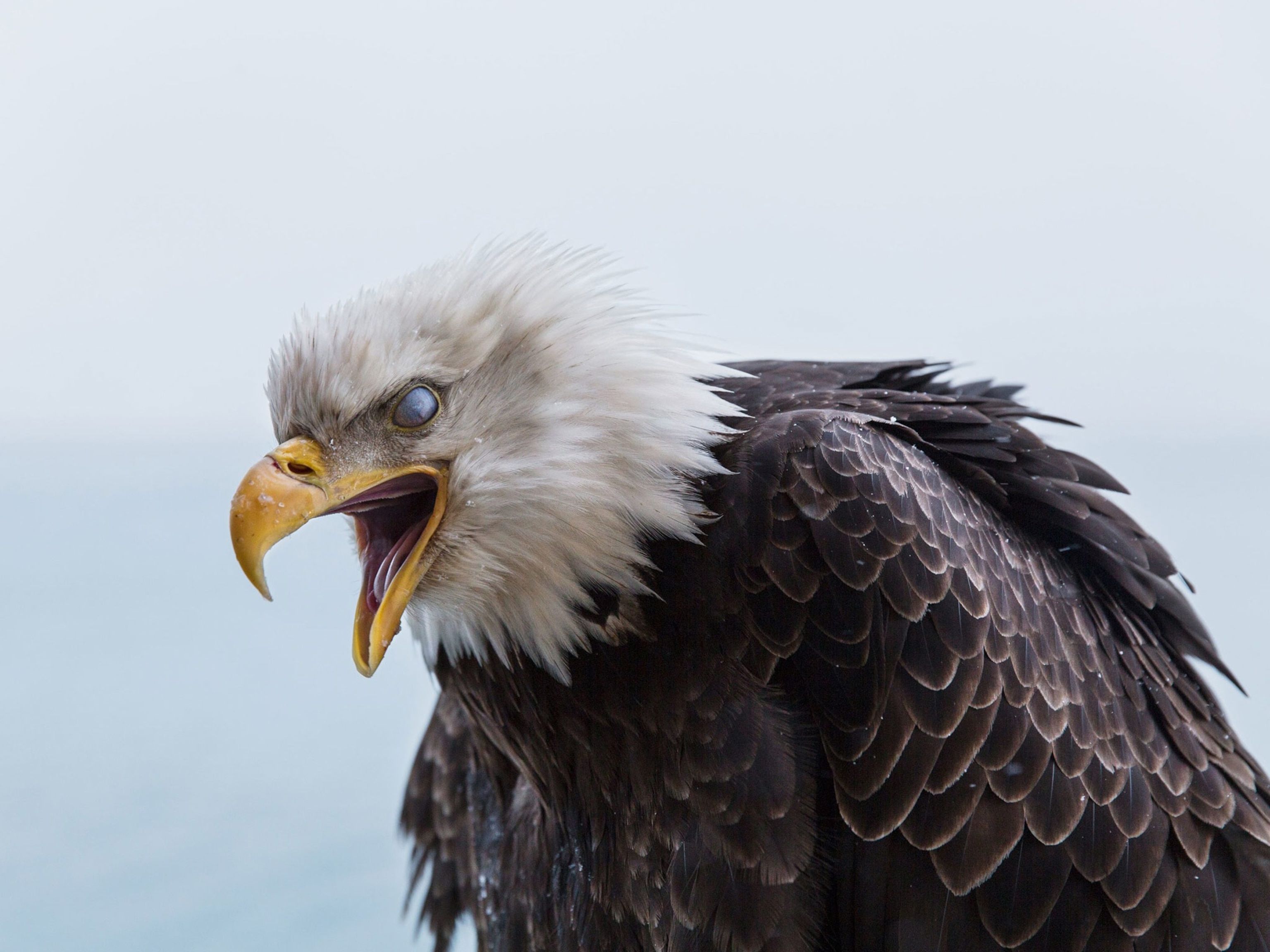
Eagles Are Being Killed for Black Market Body Parts
Demand especially for feathers to adorn Native American regalia is helping fuel trafficking in the birds of prey.
Pine Ridge Reservation, South Dakota — An undercover agent was on his way to a house in Rapid City, South Dakota, to meet with a man about some eagles. The raptors in question were dead, and the man, 54-year-old Troy Fairbanks, was allegedly looking to unload their feathers and feet.
For a year and a half the U.S. Fish and Wildlife Service agent, posing as a crafts and antiques collector, had been buying eagle parts from Fairbanks, building a case against the self-described “best feather man in the Midwest” for selling eagles and other protected birds, according to legal documents.
On this occasion, February 3, 2016, Fairbanks had invited the agent to his home to scope out his latest offerings. Allegedly for sale: eagle wings stuffed in a suitcase and dresser drawers; wooden sticks capped with severed eagle heads; eagle feet stored in the basement; and, hanging from walls, eagle feather-laden bustles, the kind worn by Native American men during dances. The agent forked over $800 for various eagle parts.
In late April 2017 the U.S. Department of Justice announced it had indicted Fairbanks, a member of the Standing Rock and Lower Brule Sioux tribes who owns a Native American dance company called Buffalo Dreamers, for conspiracy to traffic wildlife, among other violations of federal laws. Fairbanks faces a maximum penalty of 25 years in prison and a more than $2 million fine. According to the indictment, Fairbanks had sold the agent thousands of dollars worth of merchandise, including an eagle head ($250), a set of eagle wings ($600), and a tribal headpiece made of bird feathers ($1,000 and some black bear claws).
Dubbed Project Dakota Flyer, the sting operation by the Fish and Wildlife Service is the latest in a string of investigations into the black market for eagle feathers and parts that has fanned out across North America and beyond. Fairbanks is one of 15 defendants accused of flouting statutes intended to safeguard bald eagles, golden eagles, and other migratory birds from poaching and exploitation.
Fairbanks declined to comment through his lawyer, Terry Pechota.
“This case was about greed—those who commercialized in eagles to make money,” says Steven Oberholtzer, special agent in charge of law enforcement for eight states in the Rocky Mountains and High Plains. It has thrust into the spotlight a trade that has the potential to affect the recovery of bald eagles, the national symbol of the United States, and fuel the decline of golden eagles, one of the country’s most impressive raptors, capable of taking down a deer.
Bald eagles are thriving in the wild, having been removed from the Endangered Species Act list in 2007 after intensive population management and the banning of the pesticide DDT, which contaminated the birds’ prey and led to severe declines in the 1960s. An estimate by the Fish and Wildlife Service put their population at 140,000 in 2016, a 14 percent increase from 2007, the last time they were assessed.
The situation is much more tenuous for golden eagles, which number only about 40,000 in the wild. Biologists expect them to keep declining in the West. Their main threats: wind turbines in the thousands (and multiplying), power lines, habitat loss from expanding cities, and lead poisoning from hunters’ ammunition the birds ingest while scavenging. Poaching for the illegal feather trade adds to the pressures on golden eagles.
“The threats are cumulative in their impact,” says Michael Hutchins, who heads the Bird Smart Wind Energy Campaign at the American Bird Conservancy, a nonprofit that supports protecting birds and their habitat. “Any exploitation of animals which is not controlled is problematic.”
The scale of the illegal trade is unknown, but Fish and Wildlife Service data offer a clue: Agents documented nearly 90 violations for sales of eagles or their parts between 2006 and 2016 in contravention of the Bald and Golden Eagle Protection Act, which also bans—among other things—killing the birds and buying or possessing their parts. But, Oberholtzer says, agents don’t enter every violation; in addition, the figure doesn’t account for separate violations recorded under the Migratory Bird Treaty Act or the Lacey Act—wildlife laws that also prohibit eagle sales.
Though the Service doesn’t keep track of how many eagles have been poached for the commercial trade, authorities say that parts offered by Project Dakota Flyer defendants alone came from about a hundred eagles.
With the growth of social media and other digital advances, the eagle business has become more sophisticated, according to Oberholtzer. He says many eagle feathers and parts are fashioned into Native American regalia destined for art collectors in North America or Europe. Other parts are used by tribe members themselves: Native Americans have long revered eagles and incorporated the birds of prey into their dress.

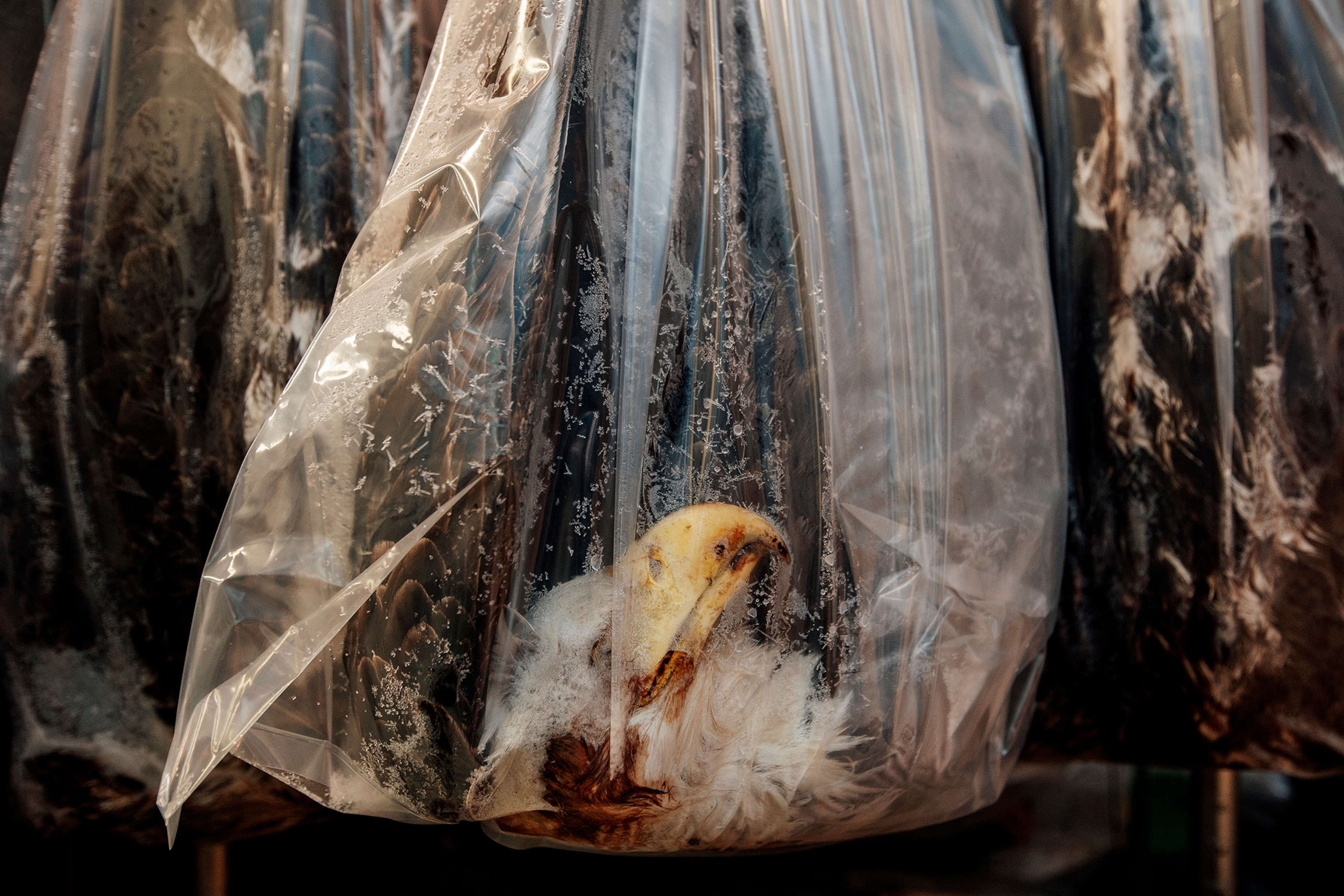
Under U.S. law, members of the 567 federally recognized tribes can request a permit from the Fish and Wildlife Service to kill eagles in the wild, but permits are rarely issued. The exemption has been in place since 1962, but a permit granted in 2012 to the Northern Arapaho tribe in Wyoming was the first time the Service gave a tribe permission to hunt bald eagles. Native Americans also can apply for eagle parts from the government-run National Eagle Repository, a Colorado-based clearinghouse of dead eagles established in 1974 to accommodate tribal communities.
But demand for eagle parts consistently exceeds supply. Applicants who may have to wait years to receive eagle parts can get frustrated and turn to the black market, says Harold Salway, an Oglala Lakota headman in South Dakota’s Pine Ridge Indian Reservation.
One activity in particular, Salway says, has helped drive the trade: “When they put prize money on the powwow, it opened the door for exploitation.”
Flaunting Your Feathers
Five men wearing red and blue-hued regalia shuffle and crouch to the drumbeat in an outdoor arena. It’s 10:45 at night, and a chill has settled into the summer air, giving the hundred or so spectators at this powwow in the Pine Ridge Reservation’s Red Shirt community respite from the oppressive heat. For the competitors in the men’s traditional dance category, the Crow Hop is their last chance to impress the judges. The winner will take home $200, a modest sum compared to the thousands of dollars offered by some powwows.
“Around here jobs are scarce,” says dancer Wesley New Holy as he waits outside the arena for the judges’ decision. The 46-year-old father of six knows all too well the importance of these contests: Pine Ridge, which sprawls over 3,500 square miles in the southwest corner of South Dakota, is one of the poorest places in the country, plagued by unemployment and drug use. New Holy, like many other Oglala Lakota dancers, earns a living squaring off at powwows across the country.
Competition is a central component of most powwows, popularized after a 1950s program established by the U.S. Bureau of Indian Affairs relocated thousands of Native Americans from the Great Plains to cities such as Denver and San Francisco. That helped spur larger, flashier public powwows emphasizing organized contests and cash prizes. The events are an economic lifeline for some communities.
Judges evaluate competitors not only on how they dance but also on how they dress. “We try to make ourselves look alive out there, more alive than anyone else,” New Holy explains. White face paint coats his forehead and lines his cheeks. He holds a fan of white feathers with chocolate-colored tips from the tail of a golden eagle. Feathers adorn the substantial bustle on his back, and two more sprout, speckled and upright, from the hair roach on his head.
That night New Holy took second place, worth $150 dollars. Robert Two Bulls, Jr., who judged the contest, says that he looks at regalia after he first evaluates a dancer on form and stamina. “In my eyes,” he says, eagle feathers can enhance the look, but he prefers traditional garb over flash.
New Holy says he was given his eagle feathers by a tribal elder and wears them because of their spiritual significance. He’s heard about others buying and selling feathers and eagle parts, which he disapproves of. “Myself, I’d never put a dollar figure on any of my feathers,” he says. “I carry them with respect.”
So does 69-year-old Jim Red Willow, a member of the Oglala Lakota executive committee. The tribe has held eagles sacred for hundreds of years, he says. Their parts are used in spiritual ceremonies and gifted for achievements in life, such as going to war. Of those who profit from eagles, Red Willow says, “Obviously they don’t know about or weren’t brought up in teachings of the significance of eagle feathers. There are stories concerning the eagle in our history that were handed down.”
Earlier that day Trina Lone Hill, who’s the historic preservation officer for the Oglala Lakota, told me a story she’d heard as a kid. We were sitting on the sofa in her home in Batesland, a desolate little town in the south-central part of the reservation, and she’d just put the finishing touches on a meat and rice casserole she was taking to a powwow later that day.
“My aunt had told me our people were praying, but their prayers were piling up,” she began. “So these birds offered to take these prayers to the Creator.” First an owl made an attempt, but the blinding sun caused it to fall and break its neck. Then a crow tried, but it flew too close to the sun and got burned. Only the eagle could deliver the prayers, suffering no more than a charred tail feather in the process.
“I love that story,” she said.
From a plastic bag Lone Hill drew out two delicate, six-inch eagle feathers she’d given her sons, ages two and five, last year when they received their Lakota names, Standing Stone Boy and Two Lands, from a spiritual leader. She keeps the feathers tucked away in a cedar box and has taught her five-year-old about their importance.
Lone Hill said she got the feathers from her father-in-law, who acquired them from the National Eagle Repository. “Most of us get them legally,” she said.
Eagles by the Bag
Dennis Wiist takes four plastic bags from a cardboard box and places them on a stainless steel counter. Wearing a white suit, face mask, and gloves to protect himself from any pathogens, he rips one open and begins to inspect the dead bald eagle inside.
“This bird is missing much of its left wing, so that’s not acceptable,” he says as he fans it out, displaying brown feathers of varying lengths with random patches of white.
He lifts the tail feathers to examine the plumes, white, billowy feathers popular with Native American women. “This bird actually has a bad plume situation,” Wiist says. He points to a raggedy bit. “That one is stripped on one side.”
It’s a typical day at the National Eagle Repository for Wiist, who spends much of his time evaluating the quality of birds that arrive after they've died naturally or been electrocuted by power lines, hit by cars, shot, or otherwise killed. He’s one of only four employees at the facility, which is nestled within the Rocky Mountain Arsenal National Wildlife Refuge, in Commerce City, a suburb just northeast of Denver.
The repository started out in Pocatello, Idaho, in 1974 after an exemption to the Bald and Golden Eagle Protection Act allowed permit-holding tribe members to gain legal access to new birds for religious purposes. In 1994 President Bill Clinton, who had met with Native Americans dissatisfied with the lack of supply, signed an executive order to make it easier and faster for them to receive eagle parts.
The order required federal wildlife agencies to send eagle carcasses to the repository, but corpses also come from state agencies, private citizens, eagle rehabilitators, and other sources. Last year the facility received nearly 2,800 dead birds. Wiist and another eagle specialist examine and write summaries about the condition of about 75 eagles each week.
To obtain eagle remains, Native Americans fill out a form specifying which part of the raptor they’d like and from which species, bald or golden. When it's their turn to receive a feather or part, the wares are boxed and shipped to the applicant. Nearly 4,000 applied last year. “We’re glad that Native Americans can practice their religion and culture at the same time that the Service is trying to preserve the birds,” Wiist says.

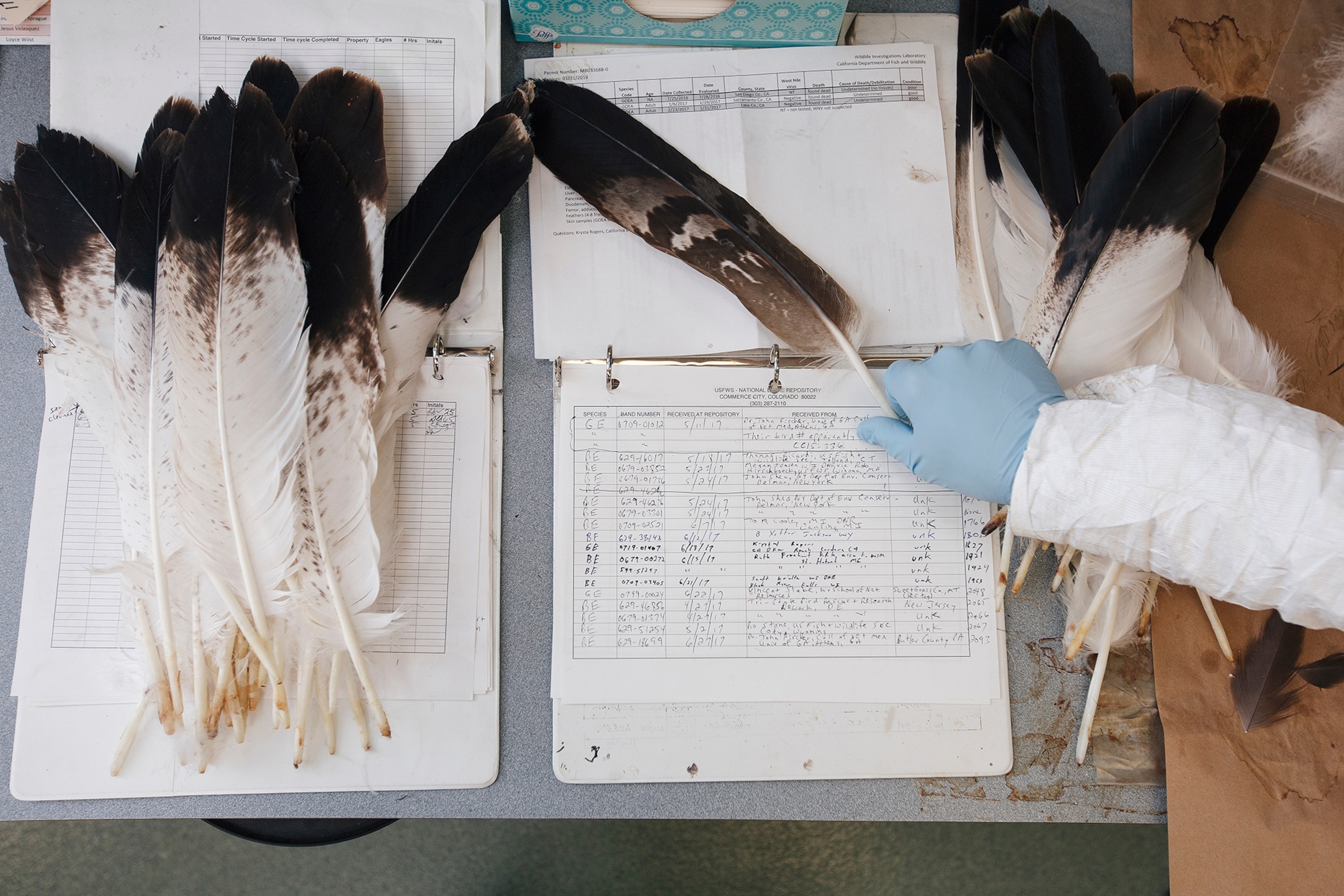
The repository gets more requests for golden eagles than the more abundant bald eagles. The hottest commodity: the largely white center tail feathers of an immature golden eagle, prized for their symmetry and the clean line where the white gives way to the brown tip. Demand for those feathers is so high that applicants may have to wait six months for them. The wait for a golden eagle tail or whole carcass can be five years. Even seekers of bald eagle parts may not receive them for two years. “Usually we just don’t have the resources, and it takes a long time to put these parts together and pluck the feathers we need,” Wiist says.
“It feels like I’m begging for these feathers when I go to the repository,” Wesley New Holy says. He’s been waiting nearly two years for a set of wings.
A Way to Boost Morale
Tribal headman Harold Salway too is fed up with the long delays. And, he says, “I don’t think the federal government should be regulating this, not when it comes to how we utilize feathers. It should come from us.”
Jim Red Willow also wants the tribe to have greater participation in the process. He envisions the appointment of a group of tribe members who would prioritize who receives eagle parts. That, he says, would ensure that only “spiritual people” would be eligible, not those “just in the market to make bustles and headdresses and sell them off.” He adds, “Obviously there's a need to control who gets eagle feathers."
In 2014 Kathryn Kovacs, an associate professor at Rutgers University School of Law, wrote an article about how the unmet needs of Native Americans under the current system exacerbates eagle poaching and trafficking. She suggested that tribes as a whole—rather than individuals—should be the ones applying to the repository and determining how eagle parts should be distributed among their members.
“Tribal members might still have to fill out application forms and wait for their requests to be filled,” Kovacs wrote, “but at least they would not be making a personal, religious request to a federal agency.” Allowing tribes to play a more active role in tailoring the administration of eagle parts to their cultural needs would, she argued, boost morale.
Some tribes have already begun to take matters into their own hands. Seven, including the Pueblo of Zuni and the Iowa Tribe of Oklahoma, have received permits from Fish and Wildlife Service to set up aviaries housing injured eagles—a good source of feathers since the birds shed them once a year.
Five years ago the Navajo Nation of Arizona established an aviary because of the “longstanding understanding that eagles had been taken or attempted to be taken for feathers or parts,” according to the aviary’s manager, David Mikesic. “We recognized that people were trying to obtain feathers or parts in an illegal manner.” Some eagles that ended up at the aviary had been shot and wounded, he says, and he recalls instances where people used to come across dead, featherless eagles left on the side of the road.
The aviary now has nine golden eagles, but tail feathers are in such demand that even this source has a waitlist of about a hundred names. Still, Mikesic says, the aviary has been good for the birds and those who want their feathers.
The Fish and Wildlife Service’s Oberholtzer agrees. “I think this is an excellent option for those tribes that have the resources and expertise to run an eagle aviary,” he says. “I’ve been told that running an aviary and working with live eagles can also be an important spiritual experience for some tribal citizens.”
As for the Project Dakota Flyer defendants, nothing in the indictments suggests any spirituality at play. Eagle parts had been stuffed in trunks, garbage bags, and coolers, according to Randy Seiler, U.S. District Attorney for South Dakota. Prices were haggled over—and an offer was even made to hunt eagles.
Fairbanks will have his day in court in November, and trials for most of the other 14 defendants are scheduled throughout the fall. Some 50 other people might also be charged.
Read more stories about wildlife crime and exploitation on National Geographic’s Wildlife Watch. Send tips, feedback, and story ideas to ngwildlife@natgeo.com.
